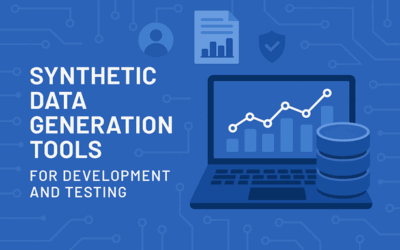Marrying SAFe and DevOps
Life in a Scrum Team
Scrum teams are familiar with backlogs. The product backlog is all the stuff we know we want to do someday. The sprint backlog is a curated list of the things we want to do now. Simple, right? If you’re fortunate enough to have all the disciplines necessary to ship software embedded in your scrum team, consider yourself lucky. You can load up tasks for the database administrator, the infrastructure engineer, and the application developers all in one sprint backlog. You may be able to address your security guru in the daily stand-up. Life is good in the small. But at scale (read: in a large organization), things get a little more complicated. The DBA may be a shared resource, serving several scrum teams. Infrastructure is probably its own group—one which doesn’t report to your boss, but whose contributions are still part of the value stream. Complicating matters further, your team isn’t the only team they collaborate with. (For a more in-depth view of “at scale,” see the article Pitfalls with DevOps at Scale.) This probably sounds familiar to anyone who operates on a scrum team in an organization of any size. You have some semblance of process around the work items that are in your immediate control. You’ve got daily stand-ups and pull requests for code review. User stories flow in and are nicely analyzed and broken down. It really feels like the immediate team is mature and finely tuned. But when it’s time to interface with another team, people start to quietly groan.Cross-Team Collaboration Is Hard
When you need something from another team, it starts to look like the Wild West again. You must ask favors of the infrastructure team. Whether they honor your requests depends on your personal relationships with them. You find yourself using emails rather than ticketing systems to make critical work requests, so there is no way to track the status of these requests. Oftentimes, these requests turn into a hot potato, with no one stepping up to own them. In the image above, we see the old “boxes and arrows” diagram. One of those boxes is your scrum team. Life is good inside that box. The other boxes represent teams that your team must interface with to deliver business value. It’s the arrows that cause all the heartache. Suppose your application development team has created a feature branch to build some new functionality. You’d like to get a test environment provisioned so that you can deploy and test this new functionality. You may fire a request into the abyss and be frustrated by a terse response of “we’ll get to it”—or worse yet, no response at all. Such is life in the siloed organization. But there’s a better way.SAFe and DevOps Coexisting
The spirit of the DevOps movement has always been to bridge this gap between development teams and operations teams, but in practice, the bridge typically falls down. Why? Often, no significant process or organizational changes actually occur when an organization decides to put its proverbial toe in the DevOps water. If you’re already using SAFe, how do you incorporate DevOps into your Agile Release Trains so that their contributions are reliably tracked and accounted for? Going back to our SAFe principles, we see that principle #7 is “Apply cadence, synchronize with cross-domain planning.” What this means in practice is that we gather all the stakeholders on a regular basis and discuss cross-domain issues—in other words, frequent communication and dependency management. This idea should resonate with those familiar with Scrum of Scrums. SAFe even gives us another fancy term, along with an acronym, for this ritual: Program Increment (PI) Planning. This is the meeting where DevOps and development team representatives are in the same room and addressing the project’s needs. Let’s look back at our earlier example, in which the development team needed a test environment provisioned. If that cross-domain concern hasn’t been addressed, it would be called out in the PI meeting. The more frequently you hold PI meetings, the less time you should spend being blocked by a dependency on another team.It’s One Big Team
Often in siloed organizations we see an application development team being on the hook for delivery. Meanwhile, the other teams are detached and not accountable. Managers lament that they can’t get the infrastructure team to do the necessary work because they have no authority over that team. SAFe aims to put the focus on delivering business value, irrespective of organizational boundaries. Therefore, every team participating in the release train shares responsibility. In practice, this means that every constituent team should both share in the success and feel the pain of failure. Many large organizations place accountability solely on the shoulders of the leadership, and usually it’s very late in the game, after many missed targets. To execute large-scale projects successfully, we need high-performing teams. But that’s just step one—that is, table stakes. Looking back to our boxes and arrows diagram, let’s consider the outcome if all of our constituent teams (boxes) are high performing, yet the interactions (arrows) are failing. In this case, the project is probably in trouble. So, we need to drive accountability down into the teams and across teams. There are many management philosophies for motivating and incentivizing teams and individuals, and each organization has its own way of doing things. Suffice it to say, ignoring low-performing team members is a losing strategy, but conversely, refusing to acknowledge high-performing team members is also perilous. The bottom line is this: if someone isn’t doing their job, address it. To keep the Agile Release Trains running on time, we need orchestration. Every player must play their part.DevOps Is a Key Player
Every organization has its own definition of DevOps. Sometimes it’s a stand-alone team that calls itself DevOps. Other times, it’s a title given to someone on an existing development or infrastructure team. For organizations practicing SAFe, the important part is that DevOps is a recognized entity during cross-domain planning. If DevOps owns the job of maintaining the stability of the production environment, they should be fully engaged in any effort that could impact application behavior. DevOps is one of those terms that’s open to interpretation, both with its form and with its function. The important thing is that they contribute to the value stream, are responsible for certain types of work, and are recognized at the table. DevOps isn’t just “glue” to fill in the gaps; it came about to address deficiencies in organizational structures. SAFe emerged as a way to apply agile principles at the program level and coordinate interactions between smaller teams. These two concepts can coexist harmoniously to provide compounding benefits to an organization.Relevant Articles
7 Synthetic Data Generation Tools for Dev & Testing
In software development and testing, having access to high-quality, realistic data is crucial. But real production data is often sensitive, regulated, or simply unavailable for testing purposes. Synthetic data generation tools provide a powerful alternative, enabling...
The SAFe Hierarchy and Levels, Explained in Depth
The Scaled Agile Framework (SAFe) is a comprehensive set of principles and practices designed to help organizations adopt agile methods on an enterprise level. It provides a set of guidelines and best practices that enable large-scale product development with agility....
DORA Compliance – Why Data Resilience is the New Digital Battlefield
How Enov8 Helps Financial Institutions Align with the EU's Digital Operational Resilience Act Executive Introduction As of January 2025, the EU's Digital Operational Resilience Act (DORA) has become legally binding for financial institutions operating across the...
Data Fabric vs Data Mesh: Understanding the Differences
When evaluating modern data architecture strategies, two terms often come up: data fabric and data mesh. Both promise to help enterprises manage complex data environments more effectively, but they approach the problem in fundamentally different ways. So what’s...
What Is Release Management in ITIL? Guide and Best Practices
Managing enterprise software production at scale is no easy task. This is especially true in today’s complex and distributed environment where teams are spread out across multiple geographical areas. To maintain control over so many moving parts, IT leaders need to...
Test Environment: What It Is and Why You Need It
Software development is a complex process that requires meticulous attention to detail to ensure that the final product is reliable and of high quality. One of the most critical aspects of this process is testing, and having a dedicated test environment is essential...










